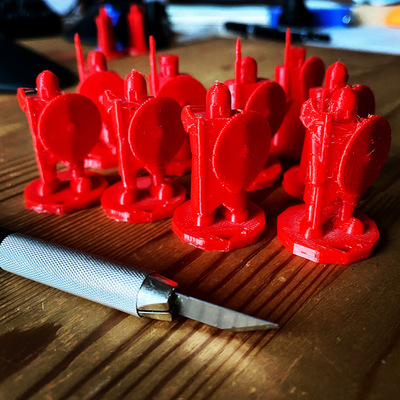
|
L'Empire des Cerisiers |
| 2021-02-25 |
L'Empire des Cerisiers
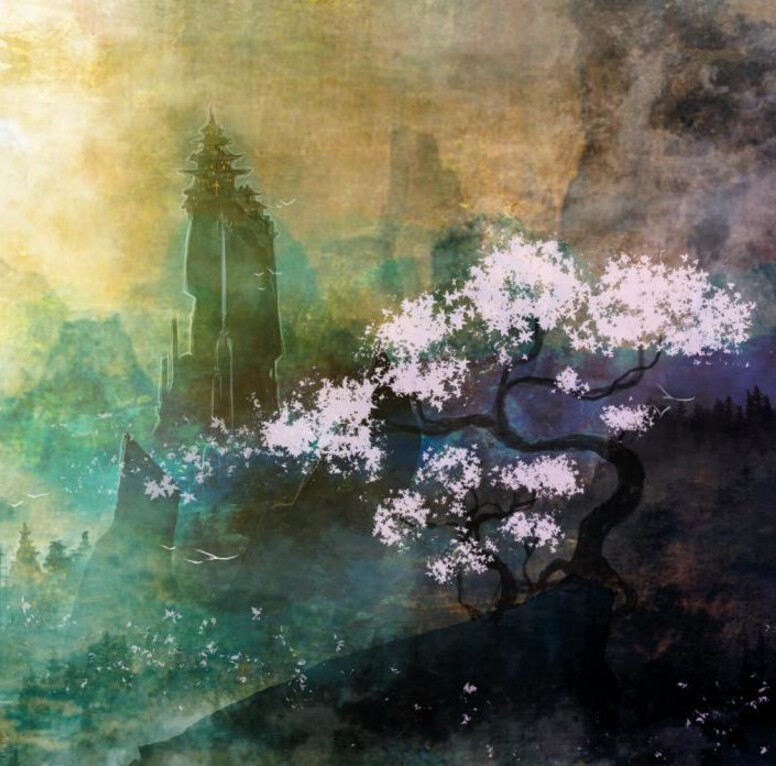
L'Empire des Cerisiers is a french roleplaying game. As you might have guessed it's about Japan, it's about the fantasy Japan dreamt by Olivier Sanfilippo.
It comes as a beautiful book, but in an unusal format, 35 by 22 centimeters. One advantage of this format, it lays easily open. That is perhaps best when preparing sessions. I am sure a dedicated game master will probably get the PDF and use printouts or an iPad to show the gorgeous illustrations and maps in the book.
Olivier Sanfilippo is multi-classed, he is an author, an illustrator, a cartographer, and probably more. He received an Ennie in 2016 for his cartography work on the Shadows of Esteren. This time he is in complete charge, L'Empire des Cerisiers is his masterwork.
Yet another Japan dreamt by a person from the West, how does it compete?
As said, the book is beautiful and well laid out, there are illustrations in full color and illustrations, region maps are in color, while city maps are in black and white.
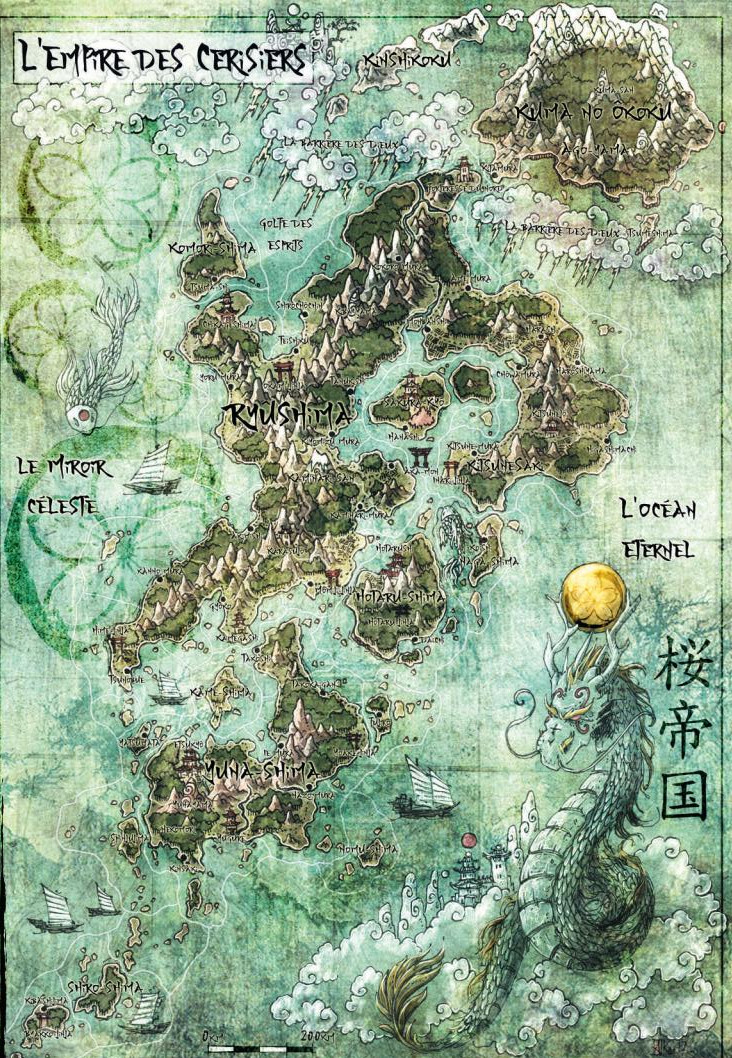
The book totals 320 pages, the first 200 pages are for the setting. The rules go for 60 pages, there are 23 pages for game masters, and a 20 pages scenario.
So 62% of the book goes for the setting, if it's good but the rule system is bad it's still usable with another system. What kind of Fantasy Japan is that?
An archipelago where one clearly distinguishes Kyūshū, Honshū, Hokkaidō and maybe Shikoku. As the word empire implies, we have an Emperor, Nanda, which seems to be, actually, a dragon (nanda kore?).
It seems to be set at the point where in the real Japan, the local governor charges started to become hereditary (Daimyō) and the warrior families are playing at equal level with the artistocratic families. Having a powerful dragon as an emperor seems to preclude military dictatorship, no shōgun.
There are notable factions: aristocratic clans, warrior clans, tribal clans, guilds, religious groups, criminal organizations, and gaijins (no Portuguese and no Dutch for now, so no fireweapons).
Some deceptions here, no Fujiwara clan, no Genji, nor Taira, well no Heian. The Nanbu clan is located in the north of the main island, the city of Sakai seems to have become Yūgure under the control of the clan Sakai.
The setting seem to imply the existence of the rest of the world, but access to it is controlled by the lords of the southern islands, to the point that foreign merchandise transiting in the south are thought to come from the southern islands by the rest of the Empire.
The Mongol invasion tentative is said to have happened, countered by the Emperor invoking the wind of the gods to counter them, but that was 500 years ago and has become the stuff of legends.
The capital city of the Empire and where its Emperor lives is Sakura-Kyō (it could have been named Ōkyō or Yōkyō to keep in line with Tōkyō). Described are the Imperial Palace, the Morning Cloud Ward, the Sacred Way Ward, the Ancient Trunk Ward, the Butterfly Ward, the Tengu Ward, the Ward of the Plains, the Celestial Horn Ward, the Silky Swirl Ward, the Enlighted Way Ward, the Dragon Ward, and the Arsenal Ward.

Each ward gets a description of its main buildings and of its main characters. The description of the Imperial Palace thus gets the description of some of the daughters of the Emperor Nanda and of the General in charge of the Imperial Watch.
What a richness, on for urban adventures with beautiful sights on the capital city.
The descriptions then wanders to smaller cities, villages, and keeps. Eight or Nine in total, each with a delightful map.
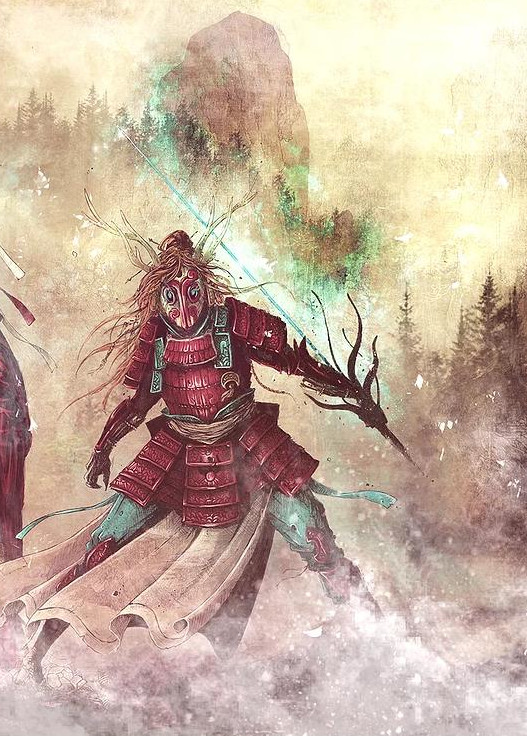
The setting is very strong, with some work it's usable with any system out there, so, in that respect, the book is already bringing strong value.
What does the rule system look like?
The character creation goes from initial concept, field, specialization, way, and ends with an aspect.
The initial concept is naming the character and giving him a function, one can come back later to change those pieces of information. It's the general intention.
Fields can be seen as formation, professions, or function. Possible fields, are bushi, courtesan, cook, spy, blacksmith, inspector, trader, miko, yin-yang master, shinobi, ... You have six points to give to those fields, with a maximum of 5 for one field. For example, one could be a Bushi 5, with Spy 1, or be a real good for nothing and be Bushi 1, Cook 1, Trader 1, Weaponsmith 1, Courtesan 1, and Civil Servant 1, (5 is Master level, while 1 is hobby level). The game master decides what fields are available at their table and a player might come up with their own field.
The specializations can be thought of as "skills" in other rule systems. They are for example, Bow, Sword, Leadership, Etiquette, Seduction, Lie, Trading, Jūjutsu, Astronomy, Cartography, Intimidation, ... The gamemaster decides what specializations are covered by the fields the player chose. The player has 10 points to distribute among specializations. The number of points allocated to a specialization may not exceed the score of the field the specialization is attributed to. For instance, a Bushi 4, may attribute at most 4 points to their specialization Sword.
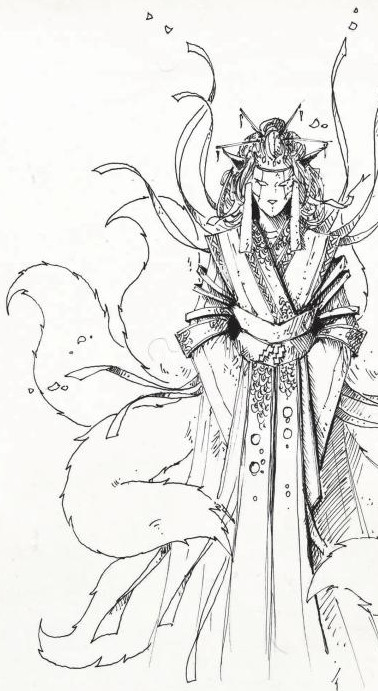
The skill check system is easy, roll 2d6, add the field score and eventually the specialization score, compare with the difficulty degree (8 easy, 12 complicated, 16 hard, ...). For example, a Bushi 4 shooting their Bow 3 has to roll 2d6 and add 7. A Bushi 3, with no specialization in the Bow, would roll 2d6+3. At most one field and one of its specialization apply.
The player then may select up to 7 points of advantage. Each point of advantage selected must be balanced by a point of disadvantage. Like for fields and specializations, the player and the gamemaster may come up with their own advantages and disadvantages, but the book comes with examples. For instance, the character could be graceful as a kitsune for +2 on seduction and convince checks, and take -3 from old wound, maybe a wound to the eye bestows the -3 on all his shoot checks.
Finally, the player has to choose a way and an aspect in the way. Those ways and aspect cover the alignment / moral compass and somehow saving throws in more classical games. The character has a score from 1 to 8 in the way/aspect he chose, he starts with 1. At this level he has a +1 and 5 power points. That increases with each new level.
I saw an example where a player chose the Way of the Eastern Dragon and developped with his gamemaster a technique to draw a protective chinese character that gave him a +3 for 3 turns (cost 2 power points). The book provides a scale to help the gamemaster design the aspect with the player.
At the end of a session, the gamemaster may award 1 to 3 experience points to each player. Fields, specializations, way and aspect each have increasing costs to improve. Advantage and disadvantages too may be traded.
We have seen above how skillchecks are performed. The gamemaster may easily replace a difficulty degree with an opposed roll. That's actually how the combat system works. If the defender equals or tops the attack roll, the defense is successful. Else, the difference is added to the weapon damage score to obtain the damage score. Armor may absorb some or all of this damage. For instance, a katana has a 4 damage score, and a heavy armour absorb 5 points of damage (but bestows -3 to the initiative of its bearer).
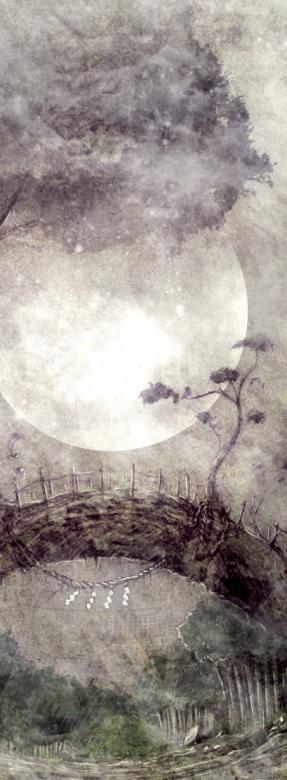
Speaking of armour, the setting brings in sacred armors. They range from protection 7 to 13, with the biggest towering at 5 meters. Yes, this games has mechas.
Hit points are simple, player characters and "first roles" get 30 hit points. "Second roles" get 15 hit points, while "extras" have 5 hit points. As hit points decrease, roll penalties increase until the character is out of combat.
The magic system is similar to the way/aspect system. There isn't a list of spell, but there is a scale guiding the gamemaster on how to constrain his magical users. Thee magical "schools" are suggested, shintoism, onmyōdō (yin yang masters), and black magic. The scale system makes me happy, it tells me that the form system I'm currently using at my table is not too shabby.
That's it for the rules. I like the freedom it grants. One could use it for any other setting, it would still be fine. Choosing a way/aspect might be time consuming, adjucating magic too.
In conclusion, we have a beautiful setting in a beautiful book with a quite lightweight rule system. I warmly recommend this game.
Anything I dislike about it? I'd probably realign it somehow with the historical Japan. I'd love to play a Heian campaign, Genji vs Taira in Kyōto, with added ghosts, oni and Yin-yang masters, reminiscences of Murasaki Shikibu, Gossamer Years, directional taboos, etc.
I showed the book to two of the japanese persons around me, of course the illustrations were what caught their attention, they aren't french readers. For both of them the illustrations, especially the landscapes, were reminiscent of chinese painting. "Mountains aren't like that here in Japan". Japanese imitated chinese masters in the beginning. In japanese temple landscapes, the mountains appear more dramatic than they really are. Still, for the japanese persons around me, the colour illustrations evoke China.
Speaking of China, there aren't many chinese characters in the book, I counted 8. But the japanese language used in the setting uses them "behind the scenes", everything being in rōmaji, but the pronunciations are chinese pronunciations and yamato pronunciations. The initial inhabitants of Japan (Emishi, Ainu, and friends) are not forgotten, but China and Korea are brushed aside. That might explain the lack of chinese characters. China shaped hole. That's one way of doing it.
Kudos to the author, illustrator, and cartographer for his masterpiece.
